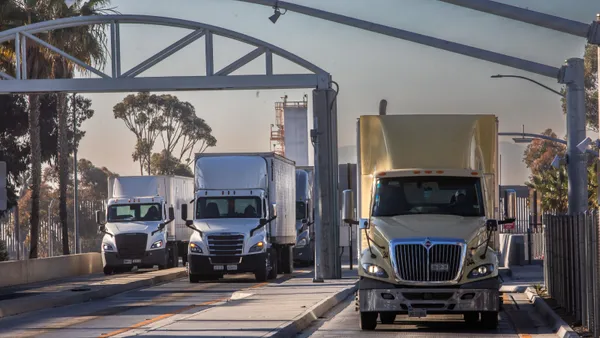Dive Brief:
- Tyson declined to provide sales guidance for the coming quarters in its most recent earnings report since African swine fever (ASF), shifting trade conditions and a fire at a key facility have made an accurate forecast difficult.
- Executives on a Tuesday call with analysts emphasized that the move shouldn't be perceived as pessimism. Sales for the fiscal year (Tyson's ended Sept. 28) were up 6% over fiscal 2018 and it's the upside of market conditions that executives see as uncertain.
- "The reason that we didn’t give the guidance is that we have a very good outlook of what we think we would earn in 2020 without the impact of ASF. The difficulty was actually in predicting what the top could be. We have a good sense of the base, it’s the top that becomes the problem," said CEO Noel White on the call.
Dive Insight:
The extenuating factors Tyson listed as blocking a realistic sales forecast are largely external and hard to predict — a concept most U.S. supply chains are contending with in the current market. For Tyson though, the swings could be larger as protein supply chains reorganize to account for what White called a 25% drop in global pork supply and a 5% to 6% drop in global protein supply due to ASF. On Tuesday's call, he said the state of protein in China is still opaque, with some reports finding half of the country's hog population has been wiped out.
The market swings Tyson and its competitors are facing may be larger than those presented by tariffs, but they are also potentially more advantageous. ASF could drive sales in Tyson's favor depending on how the Chinese react. China exempted U.S. pork from a tariff increase in September, but the country has still been turning to countries other than the U.S. to bolster ravaged domestic production to date.
At least in pork, its clear that Tyson's supply chain needs to be ready to pounce as supply and demand swings wildly over the next year.
"Exports to Mexico, Japan and China are picking up and we’ve started seeing the improved pricing because of supply shortages in China and other Asian countries affected by ASF," said White. But it's not all upside, White explained the same conditions driving demand for pork are pushing up raw materials costs. It's possible that those costs would swing up before Tyson was able to add them to its own pricing, White said.
Beef should be the most stable market of all of Tyson's business segments, but internal circumstances have complicated that market too. In August, the company's Kansas processing facility, responsible for 6% of U.S.-fed cattle production, burned for 12 hours after a cooling fluid caught fire. White said the plant will come back online within 60 days, which means it will have been down for roughly five months.
Across product segments, Tyson is in the middle of a supply chain efficiency push that will boost margins even without ASF, said White, which is why the company is expecting a minimum of 100 basis points of adjusted operating margin growth in beef, pork and chicken in 2020 — without factoring in any ASF upside.
The market seems convinced of the upside since Tyson shares gained 6% in the four hours following the call, despite missing earnings estimates for the quarter.














